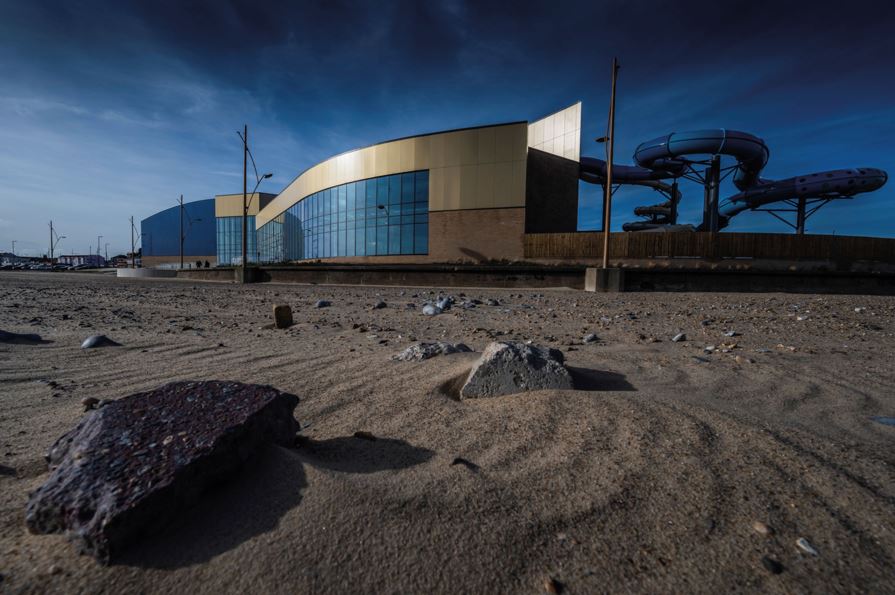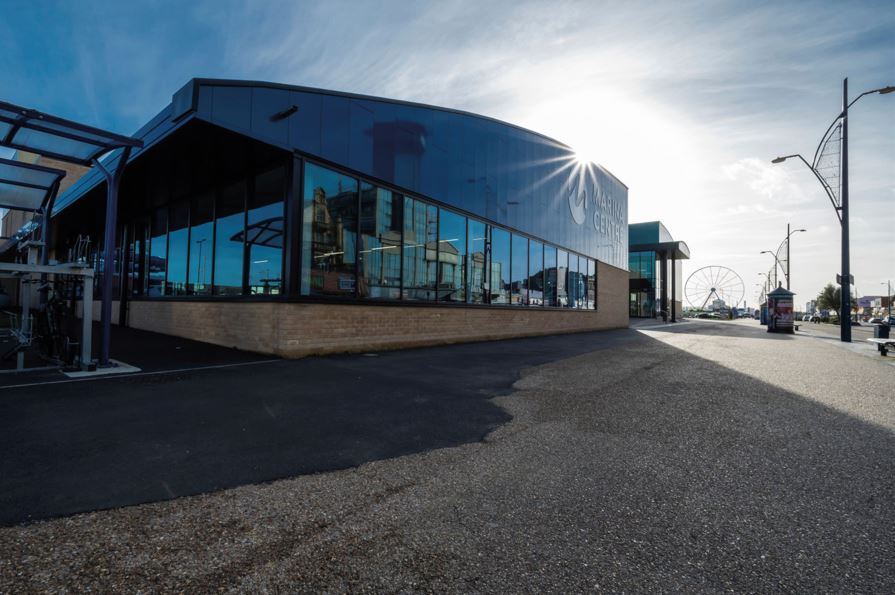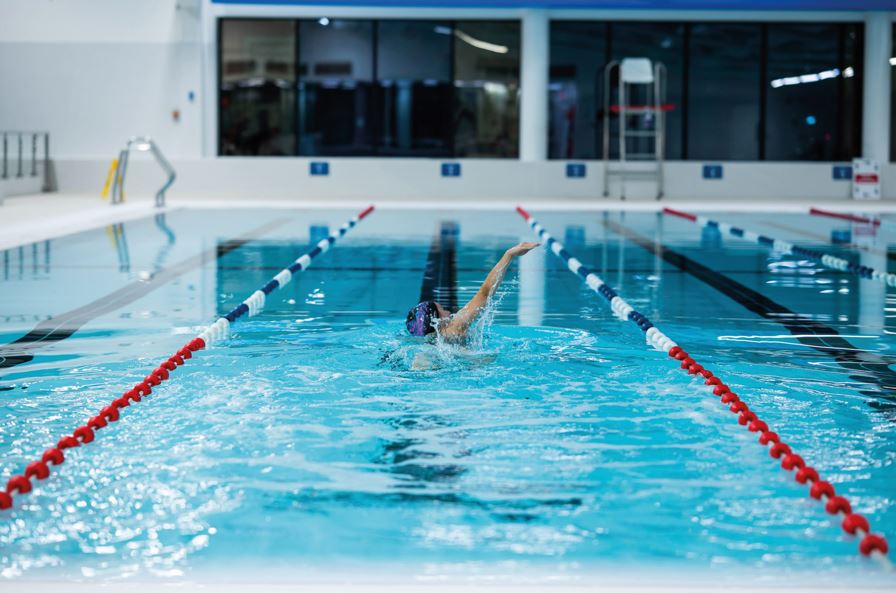
Opened last August, the £26m Marina Centre in Great Yarmouth is already helping to regenerate the seafront, says Alister Broadberry, Morgan Sindall Construction's eastern counties area director.
Urban regeneration projects that breathe new life into local communities are high on the agenda for many local authorities right now. At Morgan Sindall, we’ve seen first-hand how leisure centre developments can meet a wide variety of vital levelling up goals, ranging from enhancing health and wellbeing levels to unlocking career opportunities and strengthening local economies. Creating such facilities however is easier said than done, and it requires paying close attention to factors such as community-level demands and how the leisure centre will align with the area’s appearance, geography, market needs and future plans. This was well illustrated recently when we worked with Great Yarmouth Borough Council to create a new £26m Marina Centre. This facility was built on the site of its 1980s predecessor and means that the town’s residents can now enjoy a high-end, modern centre that offers two swimming pools (one competition standard and one with a moveable floor), in addition to a leisure water area including splash play and flumes. It also has a climbing wall zone, four court sports hall, spin studio, large gym, studios, a café that overlooks the pool and nearby beach, as well as a new 200-space car park built. The centre is directly adjacent to the seafront and its design means that users can enjoy panoramic views of the coast while also being able to walk through the centre from the beach. This has made it a more integral part of how people move around the town and its picturesque surroundings.
local investment, local benefits Right from the start of the project, the new Marina Centre was intended to play an important role in Great Yarmouth’s regeneration plans by boosting its year-round economic resilience. Like many coastal towns, Great Yarmouth is keen to regain the popularity it enjoyed during the 20th century and attract UK families that are rediscovering the joys of staycations. This is an important aim, as the seasonal nature of the tourism industry can turn the town from a booming hub of activity to a sleepy seaside spot. To bolster Great Yarmouth’s annual appeal, the Marina Centre was designed to deliver experiences that would extend beyond its boundaries and benefit the entire coastal front. This would be achieved by offering a wide range of exciting and accessible facilities and by creating a tangible connection between the beach and Great Yarmouth’s ‘golden mile’. Funding was provided by the council, drawn in part from a successful £20.1m Towns Fund bid, with an additional £2.5m from the government’s Getting Building Fund, via New Anglia Local Enterprise Partnership, £1.6m from Sport England, and £500,000 from Pooled Business Rates. Since its doors opened in August 2022, this investment has already led to some significant returns. For example, the centre has seen more than 154,000 individual users, with 20,000 additional people using the café and even more going to the centre for access to the amphitheatre seating and its seaside views. This popularity is having a direct impact on the surrounding businesses and overall appeal of the town, with recent surveys showing that it has helped boost footfall along the coastline by 20 per cent compared to pre-pandemic figures. In fact, the economic benefits started before the first user stepped foot in the new centre, as 75 per cent of the project’s supply chain was drawn from SME companies in Great Yarmouth during construction.

community value Improving wellbeing levels was a target area for the council, with obesity, particular in children, being a key focus. To help as many people as possible, the council looked at what was happening elsewhere in the country during the concept design stage and adjusted their plans accordingly. One example of this is that by working closely with the operators they made sure the costing was appropriate to avoid pricing out local residents. Leisure centres can also improve wellbeing in ways beyond health, such as helping people learn new skills, boosting careers and enhancing local areas. During this project, more than £23m of social value was generated through work experience and apprenticeships, community volunteer projects, charitable work and positive sustainability initiatives.
finding a long-term fit Alongside its health and community aspects, the new centre also had to look interesting and be aesthetically aligned with the town and coastline. Saunders Boston Architects achieved this by designing a building with a striking shape and multiple levels as well as a curved glass facade facing the sea. Internally, aggressive chlorine-laden air could become a problem for building components unless protected. This saw the building’s wet area, which features the swimming pools, and the dry side housing all the other facilities, separated by a membrane consisting of a sheet pile wall that wraps around the building and houses the three pools and the basement containing the filtration systems. The development also posed some unique challenges, such as the fact that the piling strategy had to be designed around the needs of the marine life in the nearby SeaLife centre.
what’s next? Thanks to these outcomes, the Marina Centre project is already acting as a catalyst for further regeneration. This can be seen by developments now in the pipeline for Great Yarmouth, including £13.7m secured from the Future High Streets Fund to rejuvenate the town centre and the £10m planned redevelopment of Great Yarmouth’s Winter Garden. The Marina Centre project shows that by encapsulating the perfect balance of research, funding and design, today’s leisure centres can deliver across a broad spectrum of transformative community-level benefits and act as a lynchpin for a town’s regeneration.


